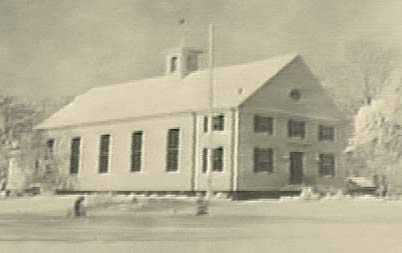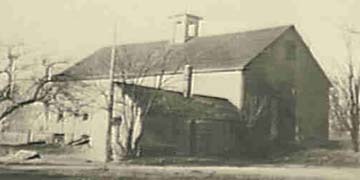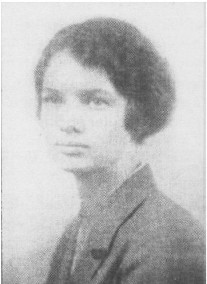
Search:
History

The Concord Scout House is an eighteenth century barn that was completely renovated in 1930 and became a community meeting resource with a dance floor and stage. It is located in downtown Concord, Massachusetts.
This description of the building's history and interesting features is largely derived from Mary Chamberlin's recounting in 1972 (see "References").
Early History: 1700's through 1925
Location
The Scout House is the only barn to survive from several farms on the west side of lower Walden Street. The building was most likely moved to its current location, and may have been built in 1788, the early 19th century or 1850's-1870's.(2)
Peter Wheeler inherited it in 1796 from his father, Timothy. In 1744, the Wheeler family also owned the house that is currently 110 Walden Street. At one point, Peter Wheeler was forced to supervise his operations from across the street in jail, where he was held for debts. He was able to stay in the jail yard at the mill pond and still supervise his workmen at butchering, barreling and manufacturing soap and candles in the barn.
The Stow Barn

Shortly after the death of Peter Wheeler in 1813, the farm was purchased by two brothers: Cyrus and Nathan Stow. The Stows continued an extensive butchering business and added a large soap and candle factory. Cyrus Stow later served as Selectman and State Representative and was a generous local philanthropist. He moved to nearby 110 Walden Street and had Henry D. Thoreau design his front fence. After over 100 years with the Stow family, the property passed to First Parish Church in 1924. The Concord Scout House has long been known as the "Stow Barn".
Neighboring Buildings
Next door to the Stow barn, the original Trinitarian Congregational Church was built in 1826. The church burned in on October 4, 1925(7) and was rebuilt on the same foundation by local architect Harry B. Little.
Local Scout History: Since the inception of Scouting in the USA
Boy Scouts
Boy Scouts of America was formed on February 8, 1910, three years after Robert Baden-Powell held the first Boy Scout Camp in England.(6) President Taft and Vice President Theodore Roosevelt accepted titles of honorary President and Vice President of the Boy Scouts of America. Within two years there were Boy Scouts enrolled in every state. By 1921 there were over 500,000 registered Boy Scouts.
During the 1920's, two Boy Scout Troops met in Concord. In 1925 five boys from Troop 1 in Concord, including Gill Lawrence and Delmore Willard, became the first Eagle Scouts in the council that served Waltham, Watertown and Concord.(4)
The current Boy Scout Troop 132, was formed in 1969 at Trinitarian Episcopal Church, and shortly thereafter moved to First Parish Church. During the 1980's Troop #132 absorbed five other troops that had met at Sanborn School (#135), St. Bernard's (#133), Our Lady of Help Christian Church (#143), West Concord Union Church (#159) and Trinity Episcopalian Church.(5)
In 1990 Boy Scout Troop 132 moved its weekly meetings to the Scout House.
Campfire Girls
Campfire Girls was founded in 1910 in Vermont by Luther and Charlotte Gulick. By 1914 Concord girls had earned honor beads in the Punkatasset Campfire Girls.(7)
Girl Scouts
On March 2, 1912 the first Girl Guide (later changed to Girl Scout) troop meeting in America was held by Juliette (Daisy) Gordon Low in Savannah, Georgia. Ms. Low had become involved with the Girl Guides formed in England by Agnes, Robert Baden-Powell's sister.
In the fall of 1925, Girl Scouting in Concord was started by Frances Wheeler, with Troop 1 being led by Sylvia Ballou and Mary Foss. Finding a suitable place to meet was always a problem, so a Building Committee was appointed to plan a Concord Girl Scout House. The Committee acquired the Stow Barn and, in 1930 created the Concord Scout House as we know it today. (See Renovation.)
The first Girl Scout rally was held at the new Scout House on June 5, 1931. The first Concord Golden Eaglets were awarded to Betty Beckvold and Molly Harlow, 52 girls received merit badges from Mrs. Henry Coolidge and 23 girls received gold stars for perfect attendance. The first fire was built on June 7 when each Girl Scout ceremonially laid a piece of wood on the hearth. Boy Scouts assisted at the door.
For many years Girl Scouts sang taps at the Scout House flagpole after the Memorial Day parade.
Concord Scout Sponsors
During World War II, the Concord Boy Scout Sponsors was formed (1943) to support and sponsor the eight existing troops and the Cub Scout packs while fathers were away in the military. The Concord Scout Sponsors (the name was changed in 1996) support local Boy Scout and Girl Scout troops. They own the 10-acre Scout Island in Warner's Pond, a canoe trailer and enough canoes, paddles, life preservers for scout use.(5)
Current Scouting
Hundreds of Girl Scouts, Boy Scouts and Cub Scouts in Concord use the Scout House for meetings, overnights, adult meetings and training, equipment storage and special events. Out-of-town troops camp in the Scout House while they visit historic sights in Concord. The Concord Scout House is registered with the GSUSA Trekking Network. Many other community groups use the Scout House for dances, classes and activities at very affordable rates (see Community Activities).
Renovation and Organization: 1925-1988
Fundraising
The Scout House exemplifies some of the remarkable acts of generosity that occurred during the depression of the 1930's. Just three quarters of a year after the financial crash of 1929, the Trustees of the First Parish Church sold the vacant barn, on the bequeathed Stow property, to the Concord Girl Scouts for a nominal fee of $1,000.00.
The property surrounding the barn was quite irregular in shape, with only 48 feet of street frontage for a building 40 feet wide, since the Trustees wanted to reserve frontage in case they wanted to build a small house in the future. The barn's property had a play area on the east side, and it bordered the property of the Peter Bulkeley School in back on Stow Street.
Concord was in great need of a pleasant, medium-sized hall for meetings, and there was widespread response to the appeal for donations. At that time, the local Boy Scout committee declined to participate. Within the month, $26,596 was raised through organized community canvassing.
Mary Chamberlin

Mary Chamberlin chaired the Construction Committee and contributed in many ways, down to planting the two hemlock trees in front. The Chamberlins were active at First Parish Church, where they sat in left side of the front central pew. Mary served on the Standing Committee of First Parish from 1933 to 1935 and was elected one of the first female Deacons there in 1981.
A bench in memory of Anne Chamberlin stands at the Lowell Street entrance to the Chamberlin Path that leads through to Keyes Road.(3)
Renovation
It was originally conceived that the barn could be torn down and a smaller house constructed in its place. Local architect Bill Kussin studied the building again and concluded that the frame, siding and foundation of the barn were sound and could be used to provide a larger house than originally planned for the same cost.
Work began in November, 1930 and the building was enclosed before severe weather set in. The tumbled down hen house to the left of the barn was torn down. Squirrels were dislodged from a corner in the barn loft where they had hidden a bushel of black walnuts collected from the large tree to the right of the driveway. That tree blew down in the hurricane of 1938.
The barn was 80 feet by 40 feet with dirt ramps on either end leading to the main floor. Within the stone foundation was a dirt-floored pig cellar which opened to the rear of the barn. The main floor had six bays with an open area in the center for the hay racks. Large timbers supported a hay loft on either side and a higher one over the center.
The floor of the barn was supported by large trunks of white pine, which extended from one stone foundation across to the opposite side. These trunks still had the bark on and were in good condition, considering their age. They were taken to the old Barrett's Mill on Barrett's Mill Road, where they were sawed into lumber which was used as sheathing in the hall. The cross beams were spliced in the center with old beams and supported from the roof with iron rods, giving a spacious unobstructed floor area.
Building Improvements
Shortly after construction, the Concord Massachusetts Girl Scouts, Inc. borrowed money to install a cement floor in the basement for more troop meetings. At a later date, the basement was partitioned off into four separate rooms with storage closets for the several troops. Various pieces of furniture have been donated through the years.
In about 1970, a fifth basement room with storage space at one end and another exit door to the rear was excavated under the stage. When the BARN Co-operative Nursery School formed in 1970, it installed a side playground and remodeled basement rooms for its own use.
In 1995 a wheelchair ramp and associated landscaping were added and the upstairs coatroom was converted to a wheelchair-accessible bathroom, using funds from Community Chest and generous community donations.
In 1998 a fire sprinkler system was installed, thanks to generous donations by Concord-Carlisle Community Chest, an anonymous donor and widespread community support.
Reorganization
When the Girl Scouts Patriot's Trail Council was formed in the mid-1970's, the Scout House (owned by "The Concord Massachusetts Girl Scouts, Inc.") was reorganized into the Concord Girl Scout House to identify it as a community resource rather than a Girl Scouts of the United States of America property.
On June 14, 1988 the Concord Girl Scout House changed its name to the Concord Scout House, Inc. and revised its Constitution and By-laws to include Boy Scouts and other community events. Its purpose is "to foster and assist the Scout movement, to provide a facility for wholesome recreational activities for youth and adults in the community...."
Interesting Trivia and Fun Facts
Architectural Features
All the beams in the framework were hand-hewn and pegged together. The beams and pegs can still be seen in the walls of the dance hall.
The long granite threshold in the doorway of the old barn was used in facing the fireplace that was added to the main hall.
A beautiful view of Concord was seen from the cupola, so Bill Kussin designed a "birdcage" platform in the rafters with a ladder to the top. The original weathervane horse was mended and gilded and still runs against the wind on top of the Scout House.
Mr. Wells, the construction contractor, presented a tall flagpole set in a granite mill stone in front of the building. When the bottom rusted, the pole was attached to the building over the entrance.
Over the fireplace hangs a gift of Mr. George Albree: an electric clock and cast Girl Scout Trefoil encased in a large wooden plaque made from a fallen pine tree planted by Ralph Waldo Emerson. A duplicate clock and plaque was presented to the new Girl Scout Chalet in Adelboden, Switzerland. (The Girl Scout Chalet was given to the newly-formed World Association of Girl Guides and Girl Scouts (WAGGGS) in 1929 by Mrs. James J. Storrow of Boston.)
Bill Kussin presented a gift of three small Girl Scout Trefoils which were mounted outside over the front door.
An old pine corner cupboard was discovered in the loft and was restored for use in the office.
Scout House Reel
In 1982, the Scout House Reel, a contra dance named after the Concord Scout House, was published by the Country Dance and Song Society of America, in Northampton, Massachusetts.
The Scout House Reel, choreographed by Ted Sanella (1928-1995), was published in Balance and Swing, a collection of dances mostly written by Ted, along with an introduction describing the Boston dance scene.
God Bless America
On November 11 (Armistice Day), 1938, Kate Smith sang Irving Berlin's new "peace" song, God Bless America. As the world again dealt with war, Irving Berlin established the God Bless America Fund, dedicating the royalties from this immediately successful song to the Boy and Girl Scouts of America.
Community Activities
Revolutionary Centennials
The centennial celebration of 1875 was a gala event, attended by President Grant and Ralph Waldo Emerson. The weather was 20 degrees, the grandstand collapsed and there were no seats saved for women, but there was a successful outdoor banquet for thousands.(7) About the centennial celebration of April 19, 1875, Louisa May Alcott wrote:
By and by there will come a day of reckoning and the taxpaying women of Concord will not be forgotten, I think, will not be left to wait uncalled upon, or be considered in the way; and then I devoutly wish that those [women] will follow in the footsteps of their forefathers, and will offer another protest that shall be "heard round the world."(3)
At the bicentennial celebration in 1975, the Concord Girl Scouts produced a time capsule to be buried under Chester French's Minuteman statue at the North Bridge. This ceremony was attended by President Ford. The capsule is intended to stay in place until April 19, 2075.
Dance Lessons
Since the 1940's social dance classes for children have been held at the Scout House. The Concord Dancing School transferred to the nonprofit Concord Parents' League in the late 1960's. Since 1974 Paul Lamoreaux has been the impressive and popular instructor of legions of middle school children.
Concord-San Marcos Sister City Dances
From 1988 to 2006 the Concord-San Marcos Sister City Committee rented the Scout House for fundraising dances. This committee, under the Concord-Carlisle Human Rights Council, was part of a town effort to encourage peace and understanding through cultural exchange between Concord and San Marcos, Nicaragua. The committee contributed money towards medical, educational and financial aid to the people of San Marcos.
References
- Mary H. Chamberlin: "History of the Concord Girl Scout Community House" written and read on April 28, 1972.
- Concord Historical Commission: "Highlights of Concord's Historic Resources", printed 1996, by Richard T. Forman, Julyann Allen, Frances Benjamin, Carla Garbarino, Theodore K. Osgood, Christopher Roof, Ann C. Young and Susan H. Curtin, Chair.
- The Meeting House on the Green, A History of the First Parish in Concord and its Church, copyright 1985 by the First Parish Church in Concord.
- Raymond Lawrence: conversation with Susan Chivvis on December 4, 1996
- Bruce Mueller: conversation with Susan Chivvis on December 6, 1996.
- The Boy Scout Handbook Tenth Edition, 1990, pages 579 - 585.
- Images of America: Concord MA, by Sarah Chapin; Arcadia 1997.
by Don Veino
Website content ©2025 Concord Scout House, Inc.
Log in